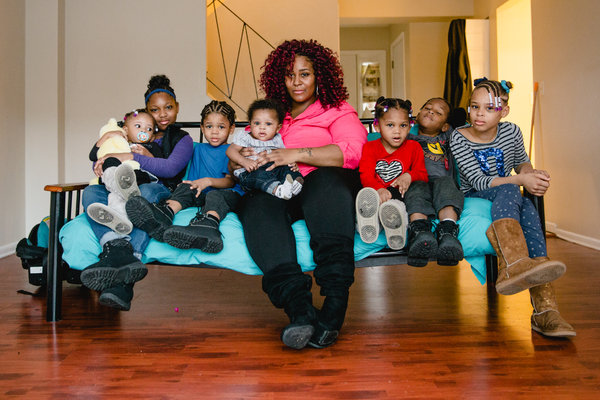For the first time, a national health panel has recommended a way to prevent depression during and after pregnancy. This condition, known as perinatal depression, affects up to one in seven women and is considered the most common complication of pregnancy. The panel, the United States Preventive Services Task Force, said two types of counseling can help keep symptoms at bay. Its recommendation means that under the Affordable Care Act, such counseling must be covered by insurance with no co-payment.
Here’s a guide to what to look for and how to get help.
What is perinatal depression and what are the signs that you or a loved one might be experiencing it?
Perinatal depression can occur during pregnancy or any time within a year after childbirth. As defined by the panel, it can involve major or minor depressive symptoms that last for at least two weeks, including loss of energy or concentration, changes in sleeping and eating patterns, feelings of worthlessness or suicidal thoughts.
It’s not the same as the “baby blues,” which is less severe and doesn’t last as long. The panel said “baby blues” can occur right after childbirth and can include crying, irritability, fatigue and anxiety, symptoms that usually disappear within 10 days.

Are some women more at risk for perinatal depression?
Many things can raise a woman’s risk of depression during and after pregnancy. Having a personal or family history of depression is a significant risk factor. Others include a range of experiences that can generate stress: recent divorce or relationship strain; being a victim of abuse or domestic violence; being a single mother or a teenager; having an unplanned or unwanted pregnancy. Economic burdens increase the risk — about one in three low-income women develops depression during or after pregnancy.
There’s no way to accurately screen women for the likelihood they might experience depression during or after pregnancy, but the panel said that any woman with even one of the risk factors listed above should seek counseling to help prevent it.
Scientists are trying to understand how genes and hormones play a role in perinatal depression, knowledge that could eventually help predict which women might develop it.
“We don’t have a good screening tool specifically for identifying people at risk for perinatal depression,” said Dr. Melissa Simon, a panel member who is vice chairwoman of research at Northwestern’s Feinberg School of Medicine’s obstetrics and gynecology department. “We need a tool.”
[Like the Science Times page on Facebook. | Sign up for the Science Times newsletter.]
What forms of counseling are best and how well do they work?
The report found that women receiving one of two forms of counseling were 39 percent less likely than those who didn’t to develop perinatal depression. One approach involves cognitive behavioral therapy, which helps women navigate their feelings and expectations to create healthy, supportive environments for their children. The other involves interpersonal therapy, including development of coping skills and role-playing exercises to help manage stress and relationship conflicts.
The panel cited two specific programs that have been successful: “Mothers and Babies,” which includes cognitive behavioral therapy in eight to 17 group sessions, with at least two of those sessions after childbirth, and “Reach Out, Stay Strong, Essentials for New Moms” or ROSE, typically delivered in four sessions during pregnancy and one postpartum.
The two programs work with both first-time mothers and women who already have children. They are available in Spanish and focus on low-income women. Both are expanding and testing different ways of delivering their curriculum, which is provided free to clinics and community health agencies.
The panel’s recommendation will require insurance to cover counseling at no cost to women receiving it. Health providers delivering it might have to pay for costs like babysitting and transportation for pregnant women who attend.
What about other prevention methods?
The task force evaluated the strongest research available on possible prevention methods, including physical activity, education, infant sleep advice, yoga, expressive writing, omega-3 fatty acids and antidepressants. In the 50 studies it analyzed, there were hints of promise with a few approaches, including physical activity and three programs in Europe (Britain and the Netherlands) that involved home visits by midwives or other health providers. But the evidence of benefit wasn’t strong enough with anything except counseling.
The panel also looked for any harm that prevention methods could cause. They found negative effects in the two small studies with antidepressants. One study reported instances of dizziness and drowsiness among women who took Zoloft. The other reported that more women taking Pamelor experienced constipation.
That doesn’t mean antidepressants aren’t good at treating actual depression, said a panel member, Karina Davidson, who is senior vice president for research for Northwell Health. After all, that’s what they’re designed for. But the studies so far don’t suggest that these drugs are the best method to prevent pregnancy-related depression before it develops.
For women who develop perinatal depression, how can it be treated?
If you have symptoms, seek help from a mental health provider, a community health center, a primary care doctor, or ask for a referral from your obstetrician or your baby’s pediatrician. Treatment might involve therapy, medication or both. For more advice and programs and support networks in your area, organizations like Postpartum Support International and Postpartum Progress are good resources.
The first step is knowing that you’re not alone, many women experience perinatal depression, it can be treated, and there are many organizations willing and eager to help.







